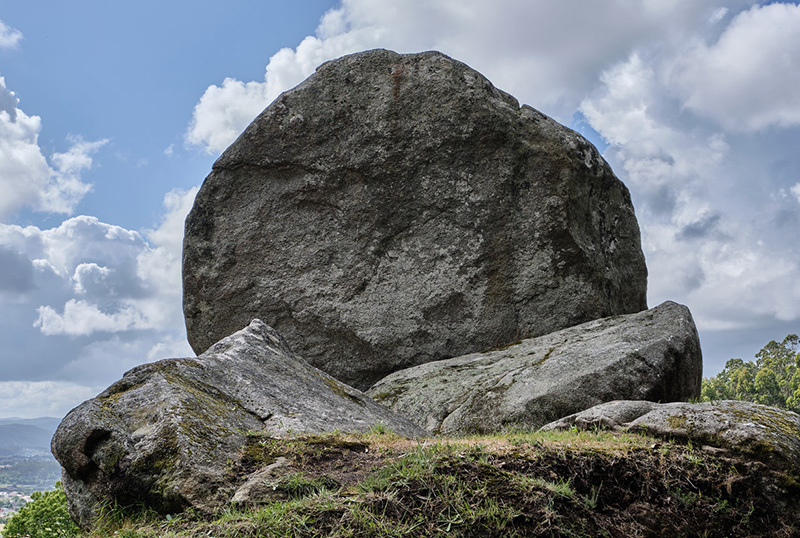This unique megalithic site in front of you is composed of a boulder (‘pena’) in the form of lunar disc placed on huge boat-shaped boulders.
In Galicia, La Pena Molexa is the megalith which has the most legends. They are all about the Celtic concept of Sacred Sovereignty.
The megalithic site of "A Pena Molexa" accords its position to the relationship with the land which surrounds it, its neutral energetic value, the construction technique with which it was erected and the articulation of its features, considered as a megalithic "Lunar Boat" more than 8,000 years old. It is considered to be an astronomical observatory preceding that of Cromlech de Os Almendres in Portugal (8,000 years old) or the famous Stonehenge (5,100 years old).
Pena Molexa would also have had the function of "hostel", and served for the funeral procession to stage the collection of the king’s soul - an event kept alive even today - after passing a test by the Moura (woman of Galician mythology) and later transportation on the lunar boat to Omórika (the Afterlife).
Antiquity places the site as of lunar-solar origin, from the beliefs about the destiny of the prince’s soul transported by the moon - the myth of Endimion - by Reve, the "Ascending Moon", in his lunar boat, linking the moon to the last trip of princes and kings in a boat that sails to the afterlife led by the moon.
"May I be the protector for those who do not have one,
May I be a guide for all travellers on the road;
May I be a bridge, a boat and a raft
For all those who want to cross [to the Other side of the Sea ]"
The Vedic goddess REVATI- Shanti Deva
Pena Molexa was probably also useful to the first Celts and Indo-Europeans for adjusting the Metonic cycle and establishing the calendar. According to those who have witnessed it, on the day when the majestic full moon rises on the summer solstice, its orientation allows the huge rock to be illuminated with a faint light of violet tones.
LEGENDS OF PENA MOLEXA
The legends place Pena Molexa at the centre of the concept of Sacred Kingship and the Celtic ceremonies of royal enthronement.
Legend has it that the Molexa Pena was made by an old woman with her little finger; another legend tells that on the night of San Juan, a young Moura matchmaker goes out to show her gold, putting the suitors that pass by the boulder that night to a test. The young people must choose the piece of greatest value, but if they choose the heaviest gold piece, the Moura disappears and the chosen object becomes coal. For others, the site of Pena Molexa is a king with all his knights converted into stone for not passing the test. Every year on the night of San Juan, they recover their human appearance and ride again.
They also say that there is a spell on the Pena Molexa: on the night of San Juan three mules of gold march into the sea if nobody breaks the spell.
